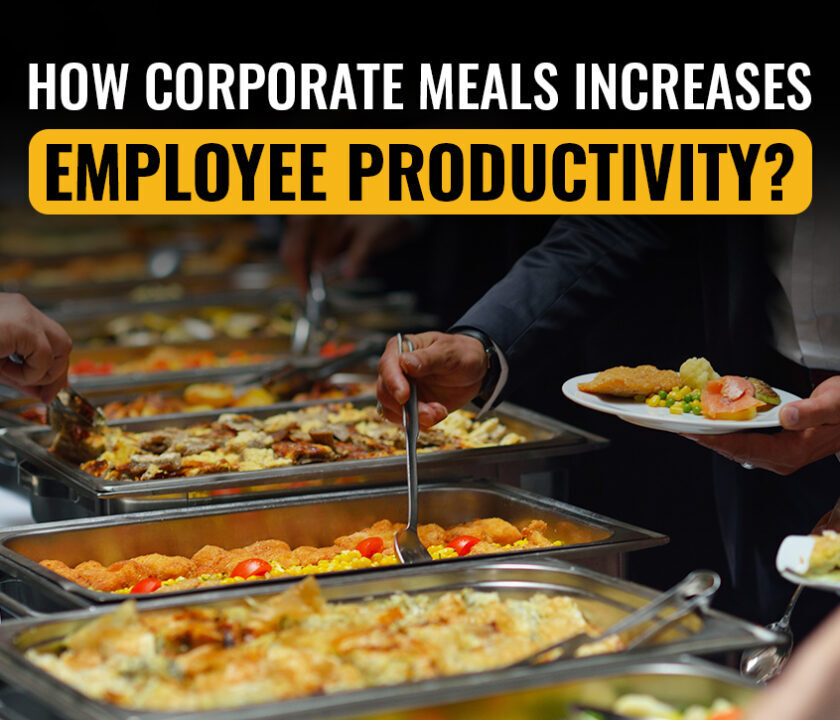How promoting healthy food can improve employee productivity?

Did you know promoting healthy food in the workplace can do wonders for employee productivity? Good food isn’t just a treat for the palate; it’s the secret weapon for employers and employees alike. Studies have shown that providing access to nutritious meals and snacks not only fuels the body but also supercharges the brain, leading to increased focus, creativity, and overall job satisfaction. In fact, research has found that employees who have access to healthy food options at work are 25% more likely to have higher job performance. Interesting, right?
Now let’s talk about why this matters not only to employers but also to employees themselves. When companies prioritise promoting food as a part of their workplace culture, they are investing in the well-being and productivity of their workforce. Providing healthy meal options not only fuels employees’ bodies but also their minds. It enhances cognitive function, improves concentration, and boosts creativity. Studies show that employees who regularly eat well at work experience reduced stress levels and have a higher sense of job satisfaction.
The Undeniable Productivity and Diet Connection
Nutritious foods rich in vitamins, minerals, and antioxidants have been linked to improved cognitive function, memory retention, and mental clarity. Incorporating brain-boosting foods like blueberries, leafy greens, and walnuts into your daily diet can enhance focus, creativity, and problem-solving abilities. So, the next time you reach for a snack, opt for brain fuel that will propel you towards success!
On the flip side, unhealthy eating habits can wreak havoc on your productivity. A diet high in processed foods, sugars, and saturated fats can lead to energy crashes, brain fog, and decreased concentration. Skipping meals or relying on quick-fix junk food may provide temporary satisfaction, but it ultimately hampers your productivity in the long run. Remember, your body and brain deserve nourishment, not empty calories that leave you feeling sluggish and unproductive. So, make smart choices.
The Power of Healthy Food Options
First and foremost, providing healthy food options demonstrates a genuine commitment to employee wellness. When companies prioritize the well-being of their team members, they create an environment that fosters better physical and mental health. Nutrition-dense meals not only nourish the body but also boost energy levels, leading to increased productivity and engagement. By investing in their nutrition, you’re investing in their time.
Some inspiring examples of companies that have successfully implemented healthy food programs include Google, known for its diverse and nutritious menu options, and Salesforce, which offers an on-site farmer’s market and wellness program. Tata Motors provide a low-calorie, less oil and spices diet and sugar-free tea to its employees. These companies understand that by nourishing their employees, they are promoting a culture of well-being and productivity.
These initiatives not only improve the physical health of employees but also foster a sense of community and shared values. By setting examples and promoting healthy choices, these organizations are empowering their teams to lead healthier lifestyles both inside and outside of work.
Strategies for Promoting Healthy Food in the Workplace
1. Create a Healthy Food Culture

Foster a workplace environment that values and promotes healthy eating. Encourage team members to make nutritious choices by providing educational resources, organizing wellness challenges, and celebrating healthy achievements.
2. Revamp the Break Room

Transform your break room into a haven of healthy snacks and beverages. Stock it with fresh fruits, vegetables, nuts, and low-sugar options. Consider removing vending machines or replacing them with healthier alternatives.
3. Partner with local restaurants

Collaborate with nearby restaurants or food vendors, like Bites Bee, to offer healthy meal options. Negotiate special deals or discounts to make nutritious choices more accessible and appealing for employees during lunchtime. Bites Bee not only provides a healthy variety of meals but also caters to personalized food options for employees, making office breaks all the more exciting.
4. Organize Lunch-and-Learners

Arrange informative sessions where nutrition experts share insights on healthy eating, meal planning, and making mindful food choices. Encourage employees to participate actively, ask questions, and share their experiences.
5. Provide Wellness Resources

Offer access to resources like healthy recipe collections, nutritional guidelines, and online platforms that provide personalized meal-planning suggestions.
6. Lead by Example

Leaders and managers should embrace healthy habits themselves, as they set the tone for the workplace culture. Encourage managers to model healthy eating behaviours and openly discuss the importance of nutrition in team meetings.
7. Gamify Healthy Habits

Implement wellness challenges or programs that encourage employees to adopt healthy practices. Reward milestones such as trying new healthy recipes, incorporating exercise routines, or achieving specific health goals.
Not only that, it’s important to educate employees as well about the benefits of eating healthy through newsletters, workshops, or informative posters. Encourage team members to make informed choices by highlighting how a well-balanced diet positively impacts energy levels, mood, productivity, and overall well-being.
Overcoming Hurdles in Implementing a Healthy Food Program
When it comes to revolutionizing the workplace with a healthy food program, it’s essential to acknowledge and address the common challenges that may arise along the way.
Challenge 1: Resistance to change

Change can be intimidating, but it’s time to break the barriers. Start by involving employees in the decision-making process. Seek their input and preferences when selecting healthy food options.
Challenge 2: Cost Considerations

Budget constraints may pose a challenge, but remember, investing in employee health is an investment in the long-term success of your organization. Get creative with cost-effective alternatives, such as partnering with local farmers or joining a community-supported agriculture program for fresh produce. Encourage employees to bring homemade healthy snacks to share, fostering a supportive and cost-conscious culture.
Challenge 3: Sustaining Momentum

The initial excitement may fade over time, so it’s crucial to keep the momentum going. Continuously communicate the positive impacts of the healthy food program through success stories, testimonials, and data on improved productivity or reduced sick days. Organize wellness challenges or competitions to keep the enthusiasm alive. Celebrate milestones and achievements to recognize and reward the commitment to healthier workplace culture.
Challenges are merely stepping stones to success. With the right strategies and a positive mindset, you can overcome any obstacle that comes your way.
Conclusion
Fueling success through a healthy food program in the workplace is no small feat, but it’s a journey worth embarking on. By conquering challenges, embracing change, and fostering a culture of well-being, you’re creating an environment where employees thrive both personally and professionally. Don’t forget it’s not about the food on the plate, but it’s about empowering employees by educating them on the benefits of healthy eating and creating a supportive community that celebrates vitality and productivity.





